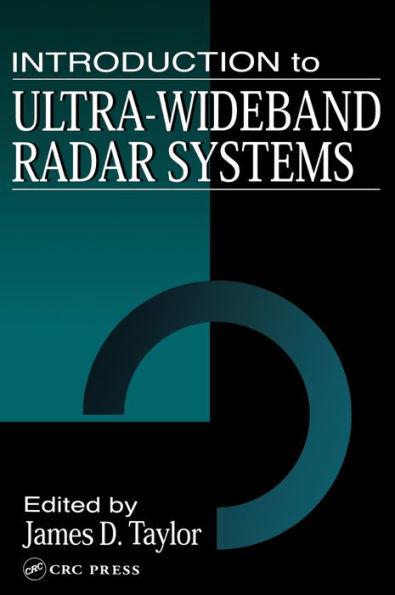Table of Contents
Ultra-Wideband Radar Overview, Introduction, Ultra-Wideband Radar Terminology and Concepts, Potential Applications of UWB Radar, UWB Systems Frequency Spectrum Sharing and Interference Issues, Book, Conclusion, References, Technical Issues in Ultra-Wideband Radar Systems, Introduction, Fundamental Radar Principles, Classification of Radar Waveforms, Technical Issues in UWB Radar System Design, Summary, References, Appendices: Signal Characteristics Governing Range and Velocity Measurement Resolution; Range Accuracy Requirements for Velocity Estimation from Differential Time Delay; The Concept of Nonlinearity, Analytical Techniques for Ultra-Wideband Signals, Preface, Part 1: Fourier Analysis of Signals, Introduction, Information and Bandwidth, Fourier Analysis of Signals, Properties of the Fourier Transform, Dirac-Delta Function, Fourier Transform of Periodic Signals, Numerical Computation of the Fourier Transform, Spectral Density, Times Correlation of Power Signals, Power Spectral Density of Random Signals, Conclusion, References, Part 2: Laplace Transforms and Signal Analysis, Introduction, Laplace Transforms, Inverse Laplace Transform, Properties of Laplace Transform, One-Sided Laplace Transform, Applications of the Two-Sided Laplace Transform, Pulse Propagation in a Long Medium, Conclusion, References, Part 3: Limitations of Time and Frequency Approaches, Introduction, Consideration in Performing Time-Domain Measurements, Data Acquisition, Processing Considerations, Transformations from the Discrete to the Continuous Domain, Experimental Verification, Characterization of Objects in the Frequency Domain, Conclusion, References, Transmitters, Power Supply Design, Introduction, Considerations for Power Supply Design, Pulsed Power Supplies, Switching Techniques for Pulsed Power Supplies, Conclusion, References, Light-Activated Semiconductor Switches for UWB Radar, Introduction, The Evolution of the Requirements, Digital Synthesis of UWB Signals by Sequential Switching, Digital Synthesis: Experimental Results, Switches and Their Limits, Switch Optical Requirements, Switch Choice, Conclusion, Acknowledgments, References, Ultra-Wideband Antenna Technology, Introduction and Overview, Antennas and UWB Signals, Introduction, Antenna Elements, Aperture Antennas, References, Array Antenna Calculations in the Time Domain Using Pseudorandomly Coded Signals, Introduction, Impulse Signal Design, Correlating Receivers, Fundamentals of Beamforming in the Time Domain, Numerical Simulation, Conclusions, References, Appendix: A Discussion of Time-Domain Field Equations, Ultra-Wideband Impulse Antennas, Introduction, Relative Bandwidth, The Large-Current Radiator, Field Strengths and Magnetic Flux of the Large-Current Radiator, Measured Antenna Patterns, References, Linear Array Beam Forming with Nonsinusoidal Waves, Introduction, Array Beamforming with Sinusoidal Waves, Beamforming with Nonsinusoidal Waves, Frequency Domain Array Beamforming, Transfer Function and Impulse Response of Linear Array, Synthesis of Antenna Array Beam Patterns, Summary, References, Direct Radiating Systems, A Basic UWB Design and Experiments: Blumlein Impulse Generator and TEM Radiator, Practical UWB Impulse Generators and Radiators, Description of Transverse Electromagnetic Transmitter, Basic Impulse Radiation Considerations, Experimental Results, Conclusions, References, Design and Analysis of an Example of NEMP Radiating Antenna, Introduction, Design and Analysis of an Example of NEMP Radiating Antenna, Radiating NEMP Simulators, Antenna Concepts for UWB Radar, Acknowledgments, References, Propagation and Energy Transfer, RF Propagation in the Atmosphere, Introduction, UWB Propagation, Low-Power Propagation through a Background Plasma, High-Power Propagation in Nonlinear Media, References, Energy Transfer through Media and Sensing of the Media, Introduction to Energy Transfer Concepts, Advanced Theory of Dielectrics and Transmissions through Media, Pulse Envelope Effects, Soliton Waves, Group Theory, and Electromagnetic Missile Concepts, References, Appendices: Further Developments in Self-Induced Transparency; The Nonlinear Wave Equations and Solitons; Relation of U(1) and SU(2) Symmetry Groups, Transmitter Signature and Target Signature of Radar Signals, Introduction, Features of Carrier-Free Radar Signals, Position Coding and Large Target Signature, Character Coding and Large Target Signature, Conclusions, References, Appendix: Continuous and Transient Response of Resonant Circuits, Radar Cross Section and Target Scattering, Introduction, Radar Cross Section, The Scattering Matrix, Frequency Dependence of RCS, Relationships among CW, Transient, and Wideband Scattering, The Singularity Expansion Formulation, Resonance Based Target Identification, References, Ultra-Wideband Radar Receivers, Introduction, Narrowband and UWB Signal Receiver Concepts, UWB Threshold Signal Detection, Correlation Detection, UWB Radar Receivers and Signal Processing, References, Appendices: Narrowband Receiver Sensitivity to UWB Signals; Computation of Correlator Output vs. SNR, High Order Signal Processing for Ultra-Wideband Radar Signals, Introduction, Background, Methodology, Experiment, Results, Conclusions, Acknowledgments, References, Performance Prediction and Modeling, Introduction and Overview, Theoretical Background for Time Domain Signal Processing, Radar Performance Prediction Principles, Comparison Analysis of Frequency Domain and Time Domain Signals, Time Domain Radar Performance Prediction, Rules for Time Domain Radar Performance Equation, Practical Example of a Time Domain Radar System and Analysis, References, Appendices: Periodic, Aperiodic, and Random Signals; The Gaussian Approximation: Heterodyne vs. Homodyne Reception; Boundary Diffraction



